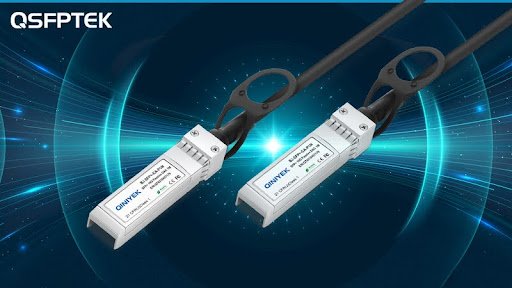In today’s fast-paced digital landscape, virtualization has become a cornerstone of modern IT infrastructure, offering enhanced flexibility, scalability, and cost-efficiency. As organizations increasingly adopt virtualization to run multiple virtual machines (VMs) on a single physical server, the need for robust and high-performance networking solutions becomes critical. One such solution is the 10G Direct Attach Cable (DAC), which can significantly optimize network performance and reliability in virtualized environments. This article explores the application of 10G DAC in virtualized setups and how it enhances data transmission between VMs.
Understanding 10G DAC
A 10G DAC is a high-speed, cost-effective cable used to connect networking equipment directly. Unlike traditional fiber optic cables, DACs are composed of copper and can transmit data at speeds of up to 10 gigabits per second (Gbps). They come in two types: passive and active. Passive DACs do not have signal amplification, making them suitable for short distances (up to 7 meters), while active DACs include signal amplification to support longer distances (up to 15 meters).
The Role of 10G DAC in Virtualized Environments
Enhanced Data Transmission Between VMs
In a virtualized environment, multiple VMs often need to communicate with each other, especially in scenarios involving database servers, application servers, and front-end servers. The bandwidth and latency between these VMs can become bottlenecks if not managed properly. 10G DACs offer high-speed, low-latency connections that facilitate faster data transfer between VMs, ensuring that applications run smoothly without network-induced delays.
Improved Network Reliability
Network reliability is paramount in virtualized environments, where the failure of a single network component can affect multiple VMs and applications. 10G DACs provide stable and consistent connections with minimal interference, reducing the risk of network outages. Their robust design and lower susceptibility to electromagnetic interference (EMI) compared to traditional copper cables make them a reliable choice for critical virtualized workloads.
Cost-Effective Scalability
As virtualization environments grow, the demand for higher network bandwidth increases. 10G DACs offer a cost-effective solution for scaling network infrastructure. They are cheaper than fiber optic cables and do not require expensive transceivers, making them an economical choice for expanding data center networks. Their plug-and-play nature also simplifies adding new connections, further reducing deployment costs and complexity.
Simplified Network Management
Managing a virtualized environment can be complex, with numerous VMs, physical servers, and network components to monitor and maintain. 10G DACs simplify network management by reducing the number of cables and connections required. This streamlined cabling infrastructure not only makes the data center neater but also eases troubleshooting and maintenance tasks, allowing IT staff to quickly identify and resolve network issues.
Best Practices for Deploying 10G DAC in Virtualized Environments
Assess Network Requirements
Before deploying SFP+ DACs, it is essential to assess the network requirements of your virtualized environment. Consider factors such as the number of VMs, expected data traffic, and latency sensitivity of your applications. This assessment will help determine the number of DACs needed and their placement within the network.
Choose the Right Type of DAC
Select between passive and active DACs based on the distance between connected devices. For connections within the same rack or over short distances, passive DACs are sufficient. For longer distances or connections between different racks, active DACs are recommended to ensure signal integrity.
Implement Redundancy
To enhance network reliability, implement redundancy by using multiple 10G DACs for critical connections. This approach ensures that if one cable fails, the backup cable can maintain network connectivity, minimizing the risk of downtime.
Regularly Monitor Network Performance
Continuously monitor the performance of your network to identify any potential issues early. Use network monitoring tools to track bandwidth usage, latency, and error rates, and adjust the network configuration as needed to maintain optimal performance.
Read Also: Kurt Vise Precision and Accuracy in Electronic Component Manufacturing
Conclusion
In virtualized environments, where efficient data transfer and reliable network performance are crucial, 10G DACs offer a compelling solution. By providing high-speed, low-latency connections, improving reliability, and offering cost-effective scalability, 10G DACs can significantly enhance the performance and stability of virtualized networks. Implementing best practices for deployment ensures that your network infrastructure remains robust and capable of meeting the demands of modern virtualization technologies.















